Seven Ways We Simplified Our Moon Phases Video
The Earth-Moon-Sun system is both intricate and immense. In our video about Moon phases, we chose to make a number of simplifications.
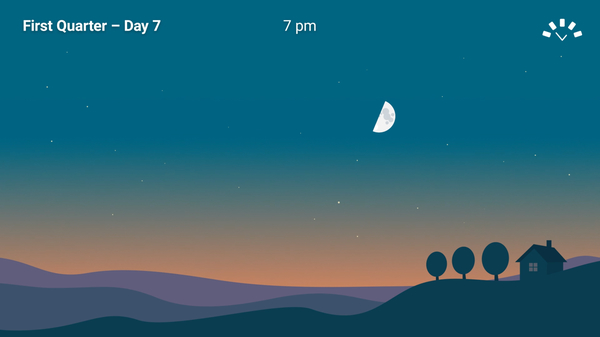
We strove for accuracy with our video, but we had to make simplifications.
©timeanddate
The ever-changing phases of the Moon come down to one simple fact: the Moon orbits Earth once a month.
At the same time, there are some wonderful complexities to astronomical objects such as the Moon.
Find and track celestial bodies with our Interactive Night Sky Map
When we were animating our video about Moon phases, we made a number of simplifications. In some cases, we had little or no choice. In other cases, we wanted to make things clearer and easier to understand. In yet other cases, we wanted to avoid having to choose a particular time of year for our animations.
How do Moon phases work? We explain what happens and show how the Moon’s shape and moonrise times change over a lunar month.
©timeanddate.com
Below are seven of the biggest simplifications we made; there are also others. Do you agree with the decisions we made? The team behind our videos would love to hear from you.
1. Sizes and Distances in Space
Our video shows two viewpoints. The first is a view from the ground, showing the Moon and Sun moving across the sky. The second is a view from space, showing the Moon’s orbit on the left, and the nearside of the Moon (the side facing Earth) on the right.
In many ways, our view from space is detailed and accurate. For instance, the Earth spins about 29.5 times for one orbit of the Moon.
But this view also contains the most drastic simplification: the relative sizes and distances of the Earth, Moon, and Sun.
To get an idea of how drastic—yet necessary—this simplification is, consider the following.
If we made the Moon one centimeter on the screen—the size of a pea—then, if everything was to scale, the distance to the Earth would be just over one meter—the length of a small dining table.
Meanwhile, the diameter of the Sun would be about four meters, which is the length of a small car. And the distance to the Sun would be around half a kilometer—roughly five football fields placed end to end.

The speed of the Moon’s orbit compared to the Earth’s rotation is accurate; relative sizes and distances are not.
©timeanddate
2. Visibility of the Moon’s Dark Areas
In our representation of the nearside of the Moon (“As seen from Earth” in the image above), we’ve made the dark areas of the Moon lighter.
This effect does in fact happen around the time of a Crescent Moon, when light reflected from the Earth means the entire lunar disk can be seen. This effect is called Earthshine.
For the rest of the lunar cycle, however, the dark areas of the Moon are invisible. Not so in our video: we’ve lightened them in every phase, to make it clear how much of the nearside is lit up.
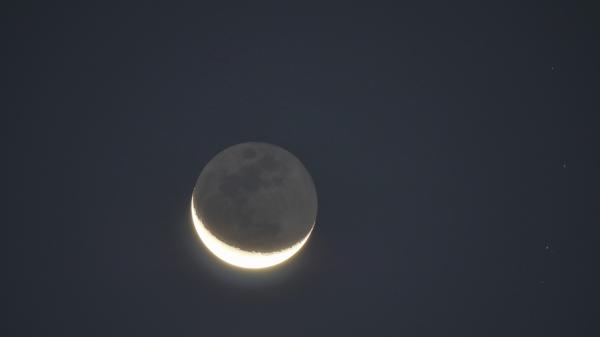
Here the Moon’s crescent is illuminated by light coming directly from the Sun. The rest of the Moon’s disk glows gently: it’s lit by light reflecting off Earth.
©iStockphoto.com/TokioMarineLife
3. Sizes Seen from the Ground
Again, in many areas, we’ve striven for detail and accuracy in our view from the ground. For example, we’ve tried to capture the ghostly faintness of a thin Crescent Moon in the daytime sky.
We’ve made many simplifications, too, starting with the sizes of the Moon and Sun. We’ve made them bigger, so they are easier to see.
In the sky itself, the Moon and the Sun are far smaller: each one has an angular diameter of about half a degree.
How small is that? Hold your hand at arm’s length: the width of your little finger is about one degree: twice as wide as the Moon or Sun in the sky.

In real life, the Moon appears smaller than this. You can easily cover it up with your little finger at arm’s length.
©timeanddate
When we see the Moon close to the horizon, it can sometimes appear to be unusually large. Curiously, this is simply an optical illusion, known as the Moon illusion.
4. Earth’s Tilt
Our view of the Moon orbiting Earth is taken looking down on the flat plane of the solar system from above the North Pole.
In our video, the North Pole points straight up. In reality, Earth’s axis of rotation—an imaginary line joining the North and South Poles—is tilted by about 23.4 degrees.

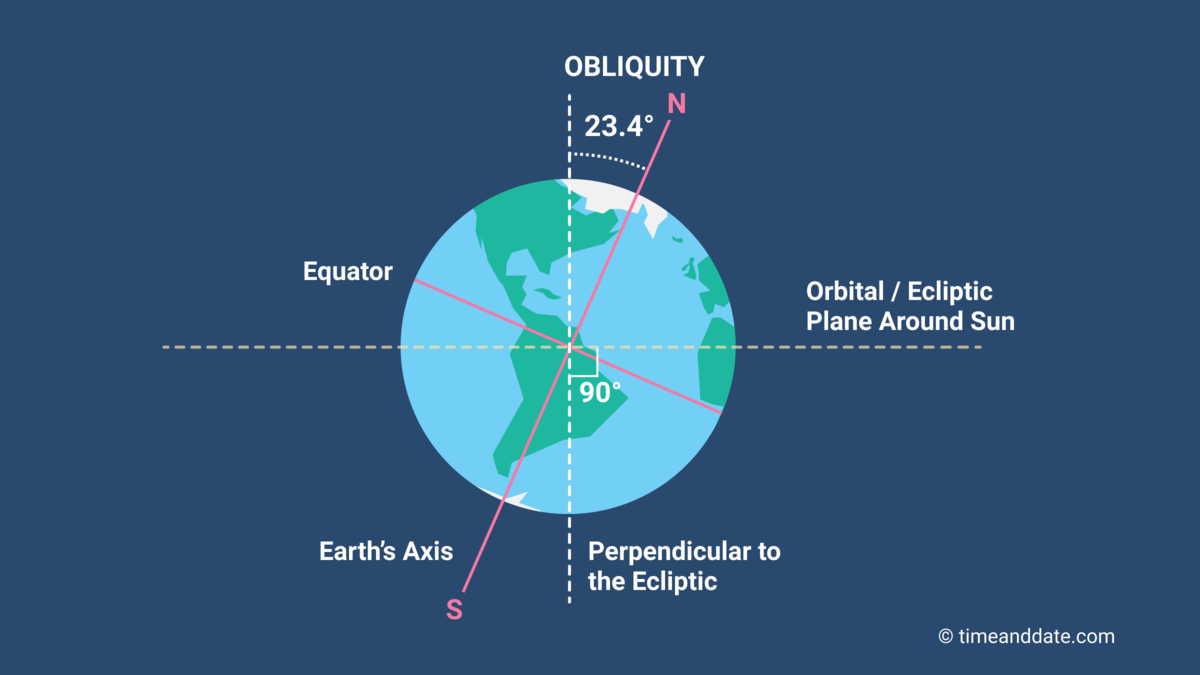
Axial tilt: Earth orbits the Sun at a tilted angle.
timeanddate.com
The reason we ignored Earth’s tilt in our video is because we wanted to avoid choosing a particular time of year for our animations.
For instance, if we tilted the North Pole toward the left or right of the screen (toward or away from the Sun) we would have been choosing summer or winter (depending on which hemisphere you’re in).
On the other hand, if we tilted the North Pole toward the top or bottom of the screen, we would have been selecting either fall or spring.
5. The Paths of the Moon and Sun
Our animated Moon and Sun follow exactly the same path across the sky. This is only approximately true.
Compared to the flat plane of Earth’s orbit around the Sun, the Moon’s orbit around Earth is tilted by about five degrees.
This means that, in our view looking down on the Earth, Moon, and Sun from space, the line showing the Moon’s orbit shouldn’t lie flat on the screen. It should be tilted by a small amount so that half is coming out of the screen, and half is going into (or behind) the screen.
In turn, this means that the paths of the Moon and the Sun in the sky cross each other twice a month. For the rest of the time, the Moon follows a path that is either above or below the Sun’s path, which astronomers call the ecliptic.
If the Moon’s path crosses the ecliptic at New Moon or Full Moon, the Earth, Moon, and Sun become aligned, and a solar or lunar eclipse happens somewhere in the world. For simplicity, we’ve ignored eclipses in our video.
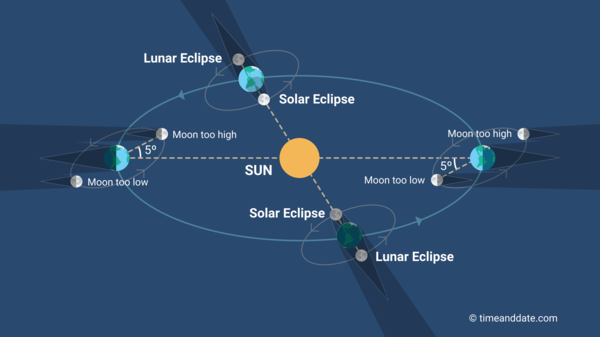

Orbital tilt: The plane of the Moon’s orbit around Earth is not the same as the plane of Earth’s orbit around the Sun.
©timeanddate.com
The paths of the Moon and Sun are also affected by the axial tilt of Earth. For instance, in December, the North Pole is tilted away from the Sun and—in the Northern Hemisphere—the midday Sun appears low in the sky.
Meanwhile, on the opposite side of Earth to the Sun, the North Pole is tilted toward the Full Moon: as a result, the December Full Moon appears high in the sky at midnight.
In the Southern Hemisphere, things are the other way around. The December midday Sun rides high above the horizon, while the Full Moon swoops low across the summer night sky.
Again, for simplicity, we’ve ignored all this in our video.
6. The Stars
Our animation doesn’t show any particular constellations. Also, our stars don’t move over the course of a night.
In reality, the entire starry sky appears to rotate. In the Northern Hemisphere, the stars rotate around Polaris, which lies above the North Pole. In the Southern Hemisphere, the sky rotates around the much dimmer star Polaris Australis, which hangs over the South Pole.

A long exposure reveals how stars appear to rotate in the night sky.
©iStockphoto.com/shaunl
One reason we ignored the movement of the stars is that it would distract from the Moon—which is, of course, the topic of our video.
Another reason we chose not to get into the detail of constellations is that it would have forced us to choose a specific latitude for the setting of our video. This is because the map of the night sky changes as we move from 90 degrees north to 90 degrees south.
It would also have forced us to choose a particular date, since constellations rise and set at different times throughout the year.
7. We Chose the Northern Hemisphere
There was one big choice about the setting of our video that we couldn’t avoid: for our view from the ground, we picked a mid-latitude location in the Northern Hemisphere.
In the Southern Hemisphere, the orientation of the Moon is the other way around: observers see the same Moon phases as those in the Northern Hemisphere, but the Moon appears to be rotated. The Moon and Sun also appear to travel in the other direction across the sky.
What about observers within the zone around the equator? On certain dates, the Moon can rise vertically (in other words, not moving toward the right or left), pass directly over the observer’s head, and set vertically at the opposite horizon.
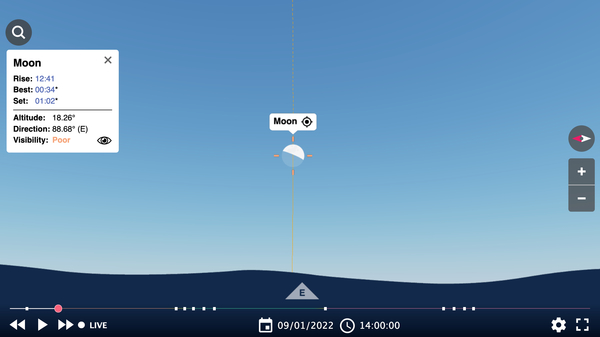
This view from our Night Sky Map for Singapore (about 160 km/100 miles north of the equator) shows a First Quarter Moon rising straight upward from the horizon.
©timeanddate
Another curiosity occurs at the North and South Poles. Earth’s tilt means there is only one sunrise and sunset a year at the poles, resulting in the phenomenon of the midnight Sun. In a similar way, there is generally only one moonrise and moonset per month, as a glance at our data table for the North Pole will show.
The Moon Tilt Illusion
One further curiosity—which can be seen in our video, and is not a simplification—is a phenomenon known as the Moon tilt illusion.
When seen in the sky, it sometimes appears that light from the Sun strikes the Moon at the ‘wrong’ angle. This is an illusion caused by a trick of perspective: in 3D space, the observed slope of a straight line changes depending on which direction we look in.
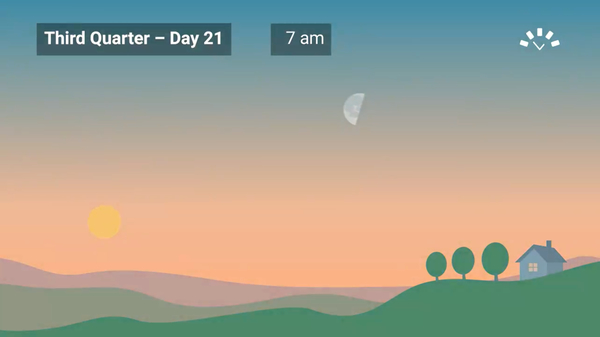
The Sun appears to be below the Moon, but the Moon appears to be lit from above. The same illusion can be seen in the sky.
©timeanddate